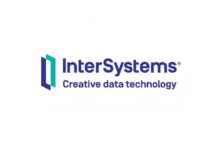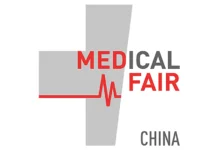The rapid transformation of healthcare delivery through telemedicine platforms and remote work arrangements has fundamentally altered the privacy and security landscape for healthcare executives. What began as emergency pandemic responses has evolved into permanent operational models that require sophisticated approaches to healthcare executive remote work security.
The Distributed Healthcare Leadership Reality
Healthcare executive remote work security encompasses the complex challenges of protecting sensitive information, maintaining compliance, and preserving privacy when leadership operates outside traditional institutional boundaries. The expansion of telemedicine, which surged from niche application to mainstream care delivery, occurred alongside broader workplace transformation that saw administrative, clinical, and executive functions dispersing to home offices, hybrid arrangements, and fully remote models.
This distributed model creates unique vulnerabilities for healthcare executives who handle extraordinarily sensitive information while working from residential environments lacking the physical security controls, network protections, and access management systems characterizing traditional healthcare facilities. Every video consultation, strategic planning session, and confidential communication conducted from home offices introduces exposure points that malicious actors actively seek to exploit.
The healthcare sector’s persistent status as the most cyberattacked industry intensifies the risks associated with distributed executive work. Adversaries recognize that remote work environments present softer targets than hardened institutional networks, making executives working from home particularly attractive attack vectors. The 92% of healthcare organizations that experienced cyberattacks in 2024 faced threats increasingly targeting remote access vulnerabilities.
Healthcare executive remote work security demands comprehensive approaches addressing home network vulnerabilities, family member exposure, device management, confidential communication protection, and the psychological burden of maintaining security vigilance in personal spaces. Unlike traditional office security that organizations control directly, home office protection requires executives to implement and maintain security measures in environments where personal and professional technology intersect continuously.
The regulatory obligations accompanying healthcare data management extend fully into remote work environments. HIPAA requirements for protecting patient information apply regardless of where healthcare executives access or discuss confidential data. Executives working remotely bear responsibility for ensuring their home offices meet security standards equivalent to institutional settings, creating compliance challenges that many leaders find daunting.
Home Office Security Vulnerabilities
Home internet networks represent perhaps the most consequential vulnerability in remote healthcare executive security. Residential internet connections typically employ consumer-grade routers with minimal security configurations, default passwords that remain unchanged, outdated firmware lacking current security patches, and limited network segmentation allowing compromised devices to access entire home networks. These weaknesses create pathways for attackers to intercept executive communications, access organizational systems, or deploy malware.
The proliferation of Internet of Things devices in modern homes compounds network vulnerability. Smart televisions, voice assistants, home automation systems, security cameras, and connected appliances all maintain network connections and often lack robust security controls. Compromised IoT devices can serve as entry points enabling attackers to monitor executive activity, capture sensitive conversations, or pivot to more valuable targets on home networks.
WiFi security in home environments frequently falls short of enterprise standards. Executives may use weak passwords, employ outdated WPA2 encryption or worse, fail to establish guest networks separating work and personal devices, and neglect to disable WPS and other vulnerable features. These WiFi vulnerabilities allow nearby attackers to compromise network access and intercept communications traveling across home networks.
Router configuration and firmware updates receive inadequate attention in most residential settings. Healthcare executives rarely possess networking expertise to properly secure and maintain home routers. Default administrative credentials, unnecessary services remaining enabled, and years-old firmware containing known vulnerabilities characterize many home network edge devices protecting executive access to sensitive healthcare systems.
Network segmentation proves challenging in residential environments lacking managed network infrastructure. Best practice calls for isolating work devices on separate network segments from personal devices, IoT systems, and guest access. However, implementing VLAN segmentation or multiple physical networks in home offices requires technical sophistication beyond most executives’ capabilities without organizational IT support.
Physical security of home offices creates exposure distinct from network vulnerabilities. Executive residences lack the access controls, surveillance systems, visitor management, and physical barriers characteristic of healthcare facilities. Family members, guests, service providers, and neighbors may inadvertently observe confidential information displayed on screens, overhear sensitive discussions, or access devices left in shared spaces.
Family Member Exposure Through Shared Networks
The intersection of executive work and family internet use creates privacy risks as household members unknowingly compromise security through normal online activities. Children downloading games, spouses shopping online, or teenagers engaging with social media all introduce malware risks, phishing exposures, and data leakage possibilities affecting entire household networks including executive work devices.
Shared device usage patterns common in families create particular risks when household members use executive work devices for personal purposes or when executives use family devices for occasional work tasks. Each instance of mixed personal-professional use introduces contamination risks where malware or compromise from personal activities affects work systems or sensitive work data persists on personal devices vulnerable to family access.
Social media activity by family members can inadvertently disclose executive information, travel plans, or household routines that enable social engineering attacks or physical security threats. Well-meaning posts about family activities may reveal executive locations, upcoming absences from home, or personal details that attackers leverage in targeted campaigns. Family members often lack awareness of how seemingly innocent social sharing creates executive vulnerability.
Voice assistants and smart home systems listening continuously in executive home offices create eavesdropping risks as these devices capture conversations about confidential healthcare strategy, patient information, or organizational planning. While legitimate voice assistants employ privacy protections, the presence of always-listening microphones in spaces where sensitive discussions occur represents inherent exposure that executives must carefully manage.
Home network compromises affecting family devices can provide attackers with persistent presence monitoring executive activity, capturing credentials, or waiting for opportunities to access more valuable systems. A teenager’s infected gaming computer or a spouse’s phished smartphone become staging points for attacks specifically targeting executive access to healthcare systems and data.
Educating family members about cybersecurity proves essential yet challenging for healthcare executives. Family members may resist security restrictions on home networks, view executive concerns as paranoia, or simply lack interest in cybersecurity sufficient to change behaviors. Effective family security requires ongoing communication, age-appropriate education, and creating security approaches the entire household can sustain.
Telemedicine Platform Security Oversight
Healthcare executives bear oversight responsibilities for telemedicine platforms serving patients remotely while simultaneously using similar technologies for their own work. This dual relationship requires understanding platform security capabilities, recognizing vulnerabilities, and ensuring organizational telemedicine programs meet security standards protecting both patients and leadership.
Telemedicine platform selection demands rigorous security evaluation covering encryption standards, access controls, data storage practices, vendor security posture, compliance certifications, incident response capabilities, and update procedures. Healthcare executives must ensure their organizations select platforms designed for healthcare’s unique security requirements rather than consumer video conferencing tools adapted for medical use.
End-to-end encryption represents a fundamental telemedicine security requirement ensuring that communications between providers and patients remain confidential even if intercepted. However, not all telemedicine platforms implement true end-to-end encryption, instead employing transport encryption that leaves communications vulnerable at endpoints or allowing platform providers access to content. Executives must understand encryption architectures and demand genuine end-to-end protection.
Authentication and access control for telemedicine platforms require multi-factor authentication, role-based access limitations, session timeout enforcement, and audit logging of access activities. Executives should verify that platforms employed for both patient care and internal communications implement authentication controls sufficient to protect against unauthorized access resulting from compromised credentials.
Data retention and storage policies for telemedicine platforms affect compliance obligations and exposure timelines. Healthcare executives must understand where recorded consultations are stored, how long platforms retain data, what encryption protects stored information, and how data is ultimately deleted. Cloud-based platforms storing data across multiple jurisdictions create particular complexity for privacy and compliance management.
Third-party integrations connecting telemedicine platforms to electronic health records, scheduling systems, billing applications, and other healthcare technology create additional attack surfaces and data flow pathways requiring security assessment. Each integration represents potential vulnerability if improperly secured or if connected systems lack adequate protection. Executives must ensure comprehensive security assessment addresses entire technology ecosystems.
Mobile application security for telemedicine platforms used on smartphones and tablets introduces device-specific vulnerabilities including inadequate app permissions, insecure local data storage, lack of certificate pinning, and reverse engineering risks. Healthcare executives using telemedicine platforms on personal devices must recognize mobile-specific security requirements and implement appropriate protective measures.
Confidential Communications in Residential Settings
The conduct of confidential executive communications from home offices creates privacy challenges distinct from network security concerns. Healthcare executives regularly participate in board meetings, strategy sessions, M&A discussions, personnel matters, and regulatory conversations requiring complete confidentiality. Conducting these communications from residential environments introduces exposure through family member presence, inadequate soundproofing, and lack of secure meeting spaces.
Video conferencing security extends beyond platform selection to encompass camera and microphone management, background visibility controls, screen sharing restrictions, and participant authentication. Executives must ensure that confidential video meetings employ virtual backgrounds or position cameras to avoid revealing personal information through home office backgrounds, mute microphones when not speaking, and verify participant identities before discussing sensitive topics.
Phone conversations about confidential matters face similar challenges in home offices where sound carries through walls, family members may inadvertently overhear discussions, or conversations conducted outdoors become audible to neighbors. Healthcare executives must establish private spaces for confidential calls, use headsets limiting sound leakage, and recognize when discussions require institutional secure facilities rather than home offices.
Email and messaging security for executive communications requires encryption, secure devices, protected networks, and careful handling of sensitive information. Healthcare executives should employ encrypted email when discussing patient information or confidential organizational matters, avoid sending sensitive information over unencrypted channels, and recognize that even encrypted communications may leave metadata exposing participants and timing.
Document security in home offices encompasses secure printing, proper storage, and appropriate disposal of confidential materials. Healthcare executives lacking institutional document shredders, secure filing cabinets, or clean desk policies face exposure of printed materials containing patient information, financial data, or strategic plans. Home office security protocols must address complete document lifecycle from creation through destruction.
Time zone and schedule challenges in globally distributed healthcare operations create 24/7 access patterns where executives may need to participate in confidential communications during early morning or late evening hours. These non-standard times may coincide with periods when household members are awake and active, creating additional challenges for maintaining confidentiality during sensitive discussions.
Balancing Remote Work Flexibility with Security Requirements
Healthcare organizations must balance the operational advantages and workforce expectations associated with remote work against genuine security risks and compliance obligations. Inflexible security mandates may prove unsustainable for executives while inadequate protections create unacceptable exposure. The optimal approach establishes risk-based security requirements appropriate to executive roles, sensitivity of information accessed, and organizational risk tolerance.
Risk assessment frameworks for remote executive work should evaluate factors including types of information accessed, systems requiring remote access, confidentiality of executive communications, family security awareness, home network infrastructure, and physical security of home offices. These assessments inform customized security approaches proportionate to actual risks rather than generic requirements applied uniformly.
Technical security controls provided by healthcare organizations to remote executives should include enterprise-grade VPN access with strong encryption, managed endpoint protection on work devices, mobile device management for smartphones and tablets, secure remote desktop solutions, and continuous monitoring for security events. Organizations must balance security effectiveness against usability to ensure executives actually employ provided tools.
Executive training specifically addressing remote work security proves essential for sustainable protection. Training should cover home network security, device management, family education approaches, secure communication practices, and incident recognition and reporting. Unlike generic security awareness training, executive remote work training must address the specific scenarios and challenges characterizing distributed healthcare leadership.
Policy frameworks governing executive remote work should establish clear expectations regarding security requirements, acceptable use of personal devices, family access restrictions, physical security measures, and incident reporting obligations. Well-designed policies provide clarity without creating unrealistic demands that executives cannot sustain in residential environments.
Organizational support for remote executive security might include providing secure home network equipment, funding home office renovations improving physical security or confidentiality, offering family cybersecurity training, or deploying technical staff to configure and maintain home office technology. Demonstrating commitment through tangible support signals that organizations view executive remote work security as institutional responsibility rather than individual burden.
Sustaining Security in Distributed Healthcare Leadership
Healthcare executive remote work security represents ongoing practice requiring continuous adaptation as threats evolve, technology changes, and family circumstances shift. The distributed healthcare leadership model promises sustained benefits including access to talent regardless of geography, improved work-life balance, and operational resilience. Realizing these benefits while protecting sensitive information and maintaining privacy demands sophisticated, sustainable security approaches that integrate seamlessly into executive work patterns. Healthcare organizations and their leaders who master remote work security will be better positioned to attract talent, operate efficiently, and defend against persistent threats in an increasingly distributed healthcare landscape.















